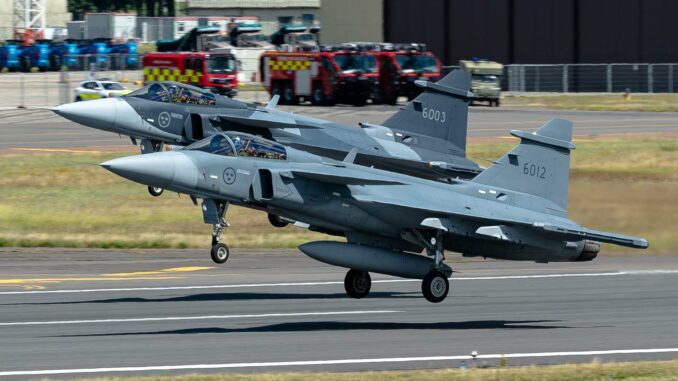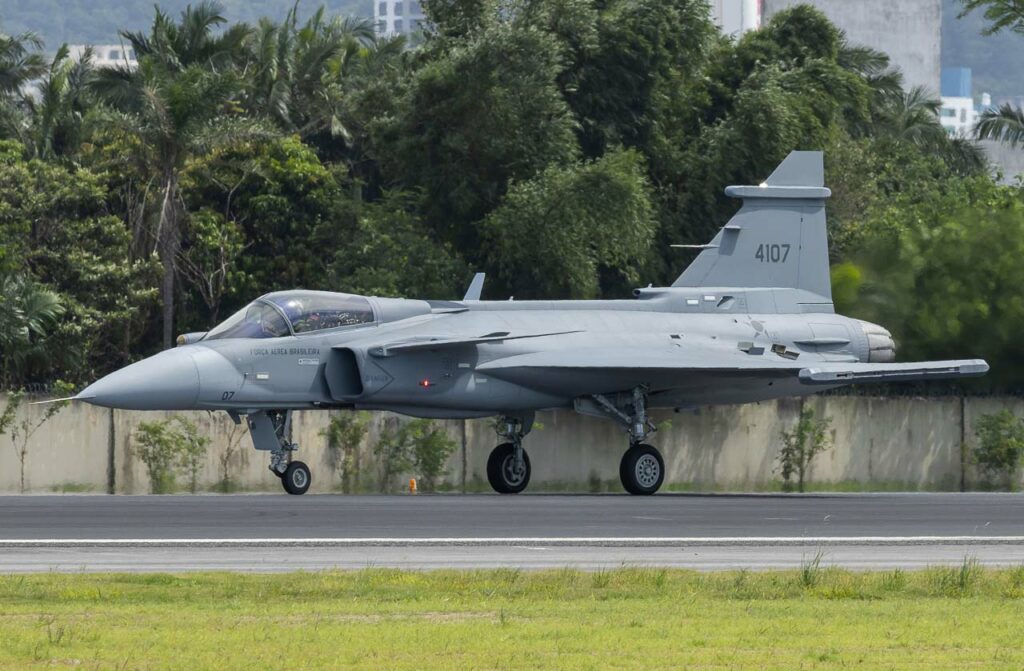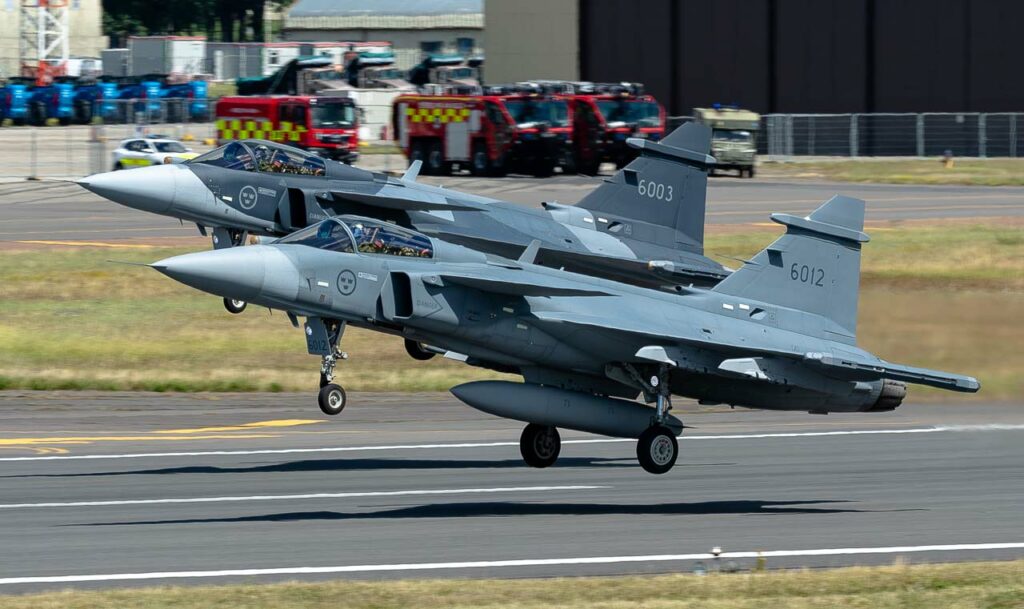
Saab undertakes concept studies for Sweden’s future fighter systems, exploring manned and unmanned solutions from a systems perspective.
Sweden, renowned for its innovative approach to defense, is looking to the future by enlisting defense giant Saab for a study of future fighter concepts. The initiative is designed to pave the way for a smooth transition beyond the Gripen E, the Swedish air force’s current jet. This strategic move underlines the need to remain at the forefront of technological and operational progress in military aeronautics. This article breaks down the key elements of this move, highlighting the implications for Sweden and the global air defense landscape.

The drive for innovation
The need for renewal and innovation is a constant in the defense industry. Sweden’s decision to embark on this path is not only a response to immediate security needs, but also an anticipation of future challenges. Saab CEO Micael Johansson had previously stressed the importance of pursuing in-depth studies to explore possible avenues for the nation’s next air vehicle.
Conceptualizing an Airborne Future
Saab has been commissioned to undertake conceptual studies of future fighter systems, with a particular focus on both manned and unmanned solutions. This initiative covers a wide range of activities, from technology development to demonstrations, while taking a systemic perspective on the future of military aeronautics. This underlines the growing recognition of the importance of integrated systems, where piloted and autonomous platforms operate in synergy to maximize operational efficiency.
Collaboration and Partnerships
The complexity of the technological challenges associated with the development of next-generation air combat systems requires a collaborative approach. Saab is committed to working closely with government agencies and industrial partners to bring this study to fruition. This cooperation is crucial to integrate technological advances, skills and visions into a coherent framework, fostering innovation and efficiency.
Options Assessment and Strategic Planning
Sweden is considering different approaches to meeting its future fighter requirements. Three main options have been identified: to develop a system independently, to collaborate, or to acquire an existing solution. This thoughtful approach highlights the caution with which Sweden is approaching the question of its future air combat capability, underlining the importance of a thorough assessment of risks and opportunities.
The Challenges and Opportunities of Unmanned Innovation
The integration of unmanned systems into future air combat capabilities represents both a challenge and an opportunity. Advances in this field could revolutionize the way air operations are conducted, offering new capabilities while reducing risks to human personnel. Saab’s participation in the Singapore Airshow, in discussion with GA-ASI and its partners, underlines the importance placed on unmanned systems as part of this evolution.
International context
Sweden’s decision to reassess its participation in the UK-led Future Air Combat System (FCAS) reflects a broader trend towards re-evaluating alliances and partnerships in the development of advanced defense technologies. The FCAS, among other international initiatives, explores next-generation “system-of-system” concepts, where a new fighter plays a central role within a multi-party combat effort. Sweden’s decision to pause its participation shows a cautious approach, favoring a thorough assessment of its own needs and strategic options before committing itself fully to costly multinational projects.
Sustainability and long-term vision
One of the reasons why Sweden is not rushing into the acquisition of a new fighter is the durability and long-term viability of the current Gripen fleet. These jets, produced by Saab, are considered advanced enough to serve for decades, giving Sweden the luxury of carefully planning its aviation future without immediate pressure. This long-term approach allows in-depth strategic thinking about future needs and emerging technologies, ensuring that when the decision is made, it will be well-founded and forward-looking.

The importance of Responsible Innovation
Sweden’s and Saab’s commitment to the development of future fighter concepts, both manned and unmanned, highlights the importance of staying one step ahead of security challenges. This involves not only the adoption of new technologies, but also a rigorous assessment of their impact on security, stability and ethics in military operations.
–
Sweden’s initiative in commissioning Saab to study future fighter concepts illustrates a cautious but determined approach to innovation in air defense. By exploring both piloted and non-piloted options, and by engaging in close collaboration with government agencies and industrial partners, Sweden is positioning itself at the forefront of defense technology. This approach, while specific to Sweden, offers lessons and inspiration for other nations on the importance of strategic planning, responsible innovation and international collaboration in the development of future defense capabilities. In a world where security threats are constantly evolving, such initiatives are essential to ensure the long-term protection and security of nations and their citizens.
War Wings Daily is an independant magazine.